Showing Spotlights 89 - 96 of 240 in category All (newest first):
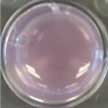 Ionizing radiation (e.g. X-rays) is widely used in the treatment of cancer, but can cause significant damage to healthy cells. The overarching goal of radiotherapy is to safely, accurately and efficiently deliver ionizing radiation in order to treat diseases, typically cancer. A novel sensor technology can help medical physicists and oncologists effectively plan fractionated radiotherapy in the clinic, reduce accidental overexposures, and reduce radiation-induced toxicity.
Ionizing radiation (e.g. X-rays) is widely used in the treatment of cancer, but can cause significant damage to healthy cells. The overarching goal of radiotherapy is to safely, accurately and efficiently deliver ionizing radiation in order to treat diseases, typically cancer. A novel sensor technology can help medical physicists and oncologists effectively plan fractionated radiotherapy in the clinic, reduce accidental overexposures, and reduce radiation-induced toxicity.
Jun 29th, 2017
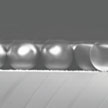 Sometimes nanoscale diamonds contain a specific type of impurity: a single nitrogen atom where a carbon atom should be, with an empty space right next to it, resulting from a second missing carbon atom. This nitrogen-vacancy (NV) impurity gives each nanodiamond special optical and electromagnetic properties. Nitrogen vacancy centers in nanodiamonds require a method to manipulate their electron spin orientations physically. Recent work demonstrates a general active NV system: Nanodiamond swimmers that self-propel.
Sometimes nanoscale diamonds contain a specific type of impurity: a single nitrogen atom where a carbon atom should be, with an empty space right next to it, resulting from a second missing carbon atom. This nitrogen-vacancy (NV) impurity gives each nanodiamond special optical and electromagnetic properties. Nitrogen vacancy centers in nanodiamonds require a method to manipulate their electron spin orientations physically. Recent work demonstrates a general active NV system: Nanodiamond swimmers that self-propel.
Jun 20th, 2017
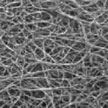 In spite of the numerous research efforts regarding the development of miniaturized, low-cost, and highly sensitive sensors based on different organic and semiconducting materials, carbon nanotubes still remain the most promising ones. An international team of researchers has now developed a simple way for fabrication and operation of carbon nanotube-based chemical sensors. The sensor consists of carboxylated single-walled carbon nanotubes, which were spin-coated over the polymer substrate between sputtered metal electrodes.
In spite of the numerous research efforts regarding the development of miniaturized, low-cost, and highly sensitive sensors based on different organic and semiconducting materials, carbon nanotubes still remain the most promising ones. An international team of researchers has now developed a simple way for fabrication and operation of carbon nanotube-based chemical sensors. The sensor consists of carboxylated single-walled carbon nanotubes, which were spin-coated over the polymer substrate between sputtered metal electrodes.
Jun 19th, 2017
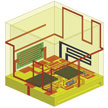 Researchers have demonstrated a fully integrated and packaged wireless sensor for environmental monitoring applications. The disposable sensor was developed using low-cost additive manufacturing technologies; namely, inkjet printing and 3D printing. This is a demonstration of 3D-printed fully-integrated System-on-Package (SoP) employing inkjet-printed sensors. This work could pave the way for low-cost disposable fully integrated wireless sensor nodes.
Researchers have demonstrated a fully integrated and packaged wireless sensor for environmental monitoring applications. The disposable sensor was developed using low-cost additive manufacturing technologies; namely, inkjet printing and 3D printing. This is a demonstration of 3D-printed fully-integrated System-on-Package (SoP) employing inkjet-printed sensors. This work could pave the way for low-cost disposable fully integrated wireless sensor nodes.
Jun 2nd, 2017
 Research groups around the world are taking big strides towards developing ultrathin and flexible sensor devices that could be attached to the skin, or even organs, and monitor vital body functions. However, the adhesion to skin of many of these sensor patches is weak. A new milestone study on skin adhesives for wearable devices is about to change that. It demonstrates that it is possible to strongly and non-invasively attach soft wearable sensors and other devices to dry or wet skin.
Research groups around the world are taking big strides towards developing ultrathin and flexible sensor devices that could be attached to the skin, or even organs, and monitor vital body functions. However, the adhesion to skin of many of these sensor patches is weak. A new milestone study on skin adhesives for wearable devices is about to change that. It demonstrates that it is possible to strongly and non-invasively attach soft wearable sensors and other devices to dry or wet skin.
Jun 1st, 2017
 Metal-organic frameworks (MOFs) are regarded as a new class of porous materials with significant prospects for addressing current challenges pertinent to energy and environmental sustainability. Due to their unique structure design and tunability, MOFs offer great potential for their effective integration and exploration in various sensing applications. Researchers have demonstrated this by developing an advanced sensor for the detection of hydrogen sulfide at room temperature, using thin films of rare-earth metal based MOF.
Metal-organic frameworks (MOFs) are regarded as a new class of porous materials with significant prospects for addressing current challenges pertinent to energy and environmental sustainability. Due to their unique structure design and tunability, MOFs offer great potential for their effective integration and exploration in various sensing applications. Researchers have demonstrated this by developing an advanced sensor for the detection of hydrogen sulfide at room temperature, using thin films of rare-earth metal based MOF.
Feb 10th, 2017
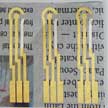 Paper, probably the cheapest and most widely used flexible and eco-friendly material in daily life, is a promising substrate for making flexible devices ranging from electronics to microfluidics, energy storage and sensors. In new work, researchers have developed a new and reliable method to achieve conformal coating of individual cellulose fibers in the paper and the fabrication of a metal electrode via patterning of gold and silver layers on the coated paper.
Paper, probably the cheapest and most widely used flexible and eco-friendly material in daily life, is a promising substrate for making flexible devices ranging from electronics to microfluidics, energy storage and sensors. In new work, researchers have developed a new and reliable method to achieve conformal coating of individual cellulose fibers in the paper and the fabrication of a metal electrode via patterning of gold and silver layers on the coated paper.
Jan 10th, 2017
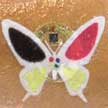 A skin-like, wearable system combines colorimetric and electronic function for precise dosimetry in the UV-A and UV-B regions of the spectrum. This platform is suitable for determination of instantaneous UV exposure levels and skin temperature. Exposure to ultraviolet (UV) radiation is a major risk factor for most skin cancers. UV rays damage the DNA of skin cells. Skin cancers start when this damage affects the DNA of genes that control skin cell growth. Creating awareness in UV exposure is widely believed to be an important aspect in improving skin health.
A skin-like, wearable system combines colorimetric and electronic function for precise dosimetry in the UV-A and UV-B regions of the spectrum. This platform is suitable for determination of instantaneous UV exposure levels and skin temperature. Exposure to ultraviolet (UV) radiation is a major risk factor for most skin cancers. UV rays damage the DNA of skin cells. Skin cancers start when this damage affects the DNA of genes that control skin cell growth. Creating awareness in UV exposure is widely believed to be an important aspect in improving skin health.
Nov 23rd, 2016
 Ionizing radiation (e.g. X-rays) is widely used in the treatment of cancer, but can cause significant damage to healthy cells. The overarching goal of radiotherapy is to safely, accurately and efficiently deliver ionizing radiation in order to treat diseases, typically cancer. A novel sensor technology can help medical physicists and oncologists effectively plan fractionated radiotherapy in the clinic, reduce accidental overexposures, and reduce radiation-induced toxicity.
Ionizing radiation (e.g. X-rays) is widely used in the treatment of cancer, but can cause significant damage to healthy cells. The overarching goal of radiotherapy is to safely, accurately and efficiently deliver ionizing radiation in order to treat diseases, typically cancer. A novel sensor technology can help medical physicists and oncologists effectively plan fractionated radiotherapy in the clinic, reduce accidental overexposures, and reduce radiation-induced toxicity.

 Subscribe to our Nanotechnology Spotlight feed
Subscribe to our Nanotechnology Spotlight feed





